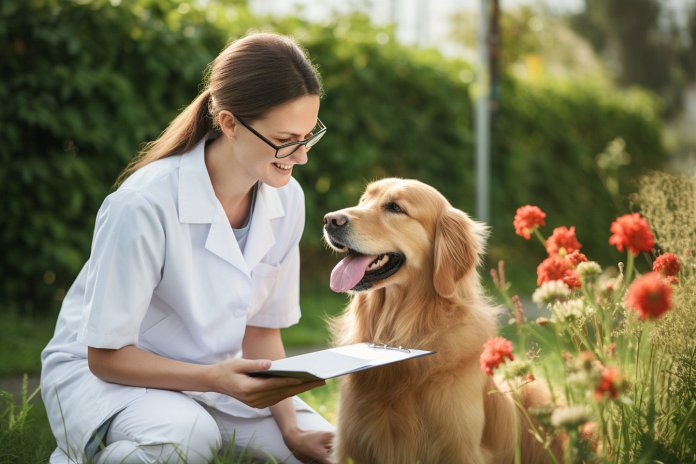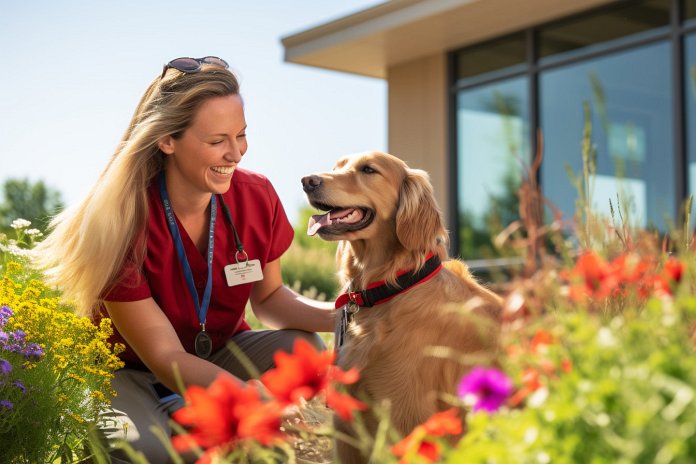
Gout is a painful form of arthritis caused by high levels of uric acid in the bloodstream. It can affect both humans and dogs, although it presents differently in dogs. In dogs, gout often manifests as bladder disease due to the buildup of uric acid. While arthritic gout is rare in dogs, bladder issues are more common. This guide will help you understand the signs of gout in dogs and how you can help them avoid uric acid buildup and bladder issues.
Signs Your Dog Might Have Gout
Gout in dogs typically presents as bladder issues rather than arthritic symptoms. If your dog is having difficulty urinating, appears to be in pain during urination, or only urinates small amounts or not at all, it could be a sign of gout. Discolored urine, such as brown or red, may also indicate gout in dogs.
Body Language
Your dog may exhibit certain body language signs if they are experiencing gout-like symptoms. These signs include weakness, lack of focus, dropped ears, and tail tucking.
Other Signs
Other signs of gout in dogs include incontinence, lethargy, bloody urine, inability to produce urine, and, in rare cases, joint issues.
Historic Causes of Gout in Dogs
Gout in dogs is primarily caused by a buildup of uric acid in the body tissue. While gout typically affects the joints in humans, it often affects the urine in dogs, leading to bladder issues. High-protein diets, genetic factors, and liver or kidney dysfunction can all contribute to gout in dogs. Dogs with kidney disease are particularly prone to gout, and certain breeds, such as Dalmatians, have a higher risk due to their unique metabolic systems.
The Science Behind Gout Affecting Your Dog
Gout in dogs results from the accumulation of needle-like uric acids that affect bladder health. Although it rarely affects their joints like it does in humans, it can appear in a dog’s paws, toes, joints, and neck area. This can lead to calcium-deposit lesions, which can be painful and potentially fatal if left untreated. Other effects of gout in dogs include bloody urine, incontinence, and lumps on the body.
Training Your Dog to Deal with Gout
If your dog has gout, they may experience discomfort and require training to help them manage their symptoms. It is important to ensure that your dog knows how to communicate when they need to go outside to avoid accidents. Rest and limited activity are also crucial for their healing process. Additionally, your dog may need to take prescribed medication, so it is important to train them to take pills. Switching to a different diet may also help with gout, but it should be done gradually to prevent digestive issues.
“Help your pup find relief from gout: signs to watch out for and training tips to manage symptoms.”

Tips & Things to Know
1️⃣ Be vigilant for signs of gout in your dog such as difficulty urinating, discolored urine, lethargy, incontinence and, in rare cases, joint issues. These symptoms occur because gout in dogs usually manifests as bladder disease due to the high buildup of uric acid.
2️⃣ Gout in dogs can be caused by a diet too high in protein, genetic factors, poor liver or kidney function, and certain breeds like Dalmatians are more prone to it. If you suspect gout, take your dog to the vet for proper diagnosis and treatment.
3️⃣ If your dog is diagnosed with gout, it’s crucial to manage their symptoms effectively. This may include training your dog to communicate their need to go to the bathroom, keeping them calm and less active during their healing period, and training them to take prescribed medication. Modifying their diet may also help but should be done gradually to avoid upsetting their digestion.
Frequently Asked Questions, Answered ✅
1. How does gout manifest in dogs compared to humans?
– Gout in dogs usually manifests as bladder issues rather than arthritic symptoms.
2. What are some signs that a dog might have gout?
– Signs of gout in dogs can include difficulty urinating, pain during urination, discolored urine, weakness, lack of focus, dropped ears, tail tucking, incontinence, lethargy, and joint issues (rare cases).
3. What are the historic causes of gout in dogs?
– Causes of gout in dogs can include a diet high in protein, genetic factors, liver or kidney dysfunction, and kidney disease. Dalmatians are particularly prone to gout due to their unique metabolic systems.
4. How does gout affect a dog’s body?
– Gout in dogs primarily affects their bladder health, but it can also appear in their paws, toes, joints, and neck area. It can lead to calcium-deposit lesions, bloody urine, incontinence, and lumps on the body.
5. How can a dog be trained to deal with gout?
– To help a dog with gout, it is important to train them to let you know when they need to go to the bathroom, keep them low-key and inactive while they heal, and ensure they take prescribed medication. Switching their diet gradually may also be beneficial.